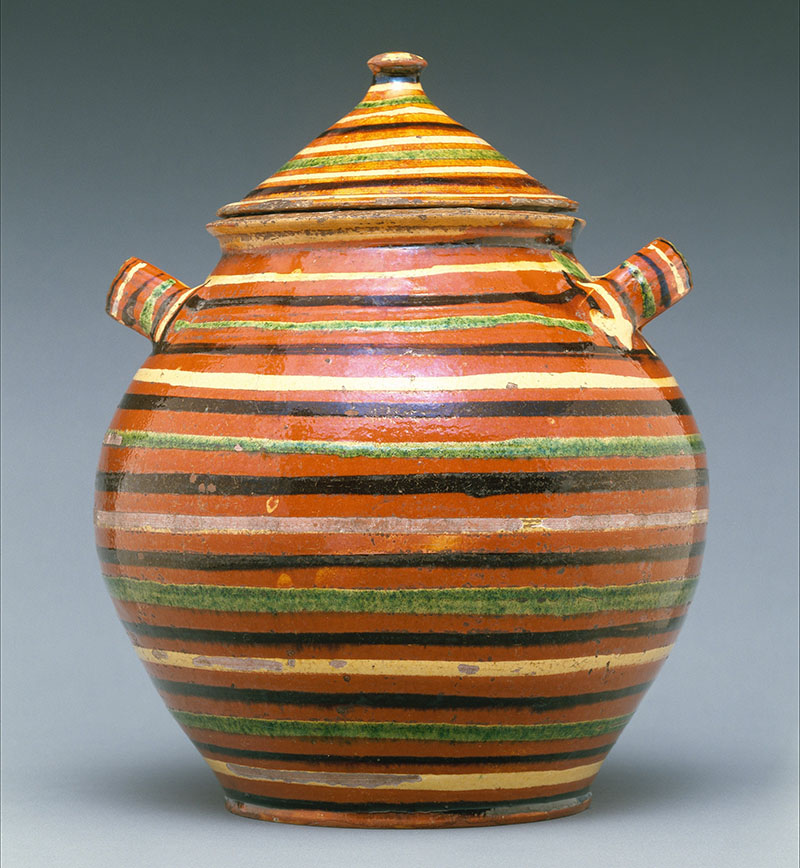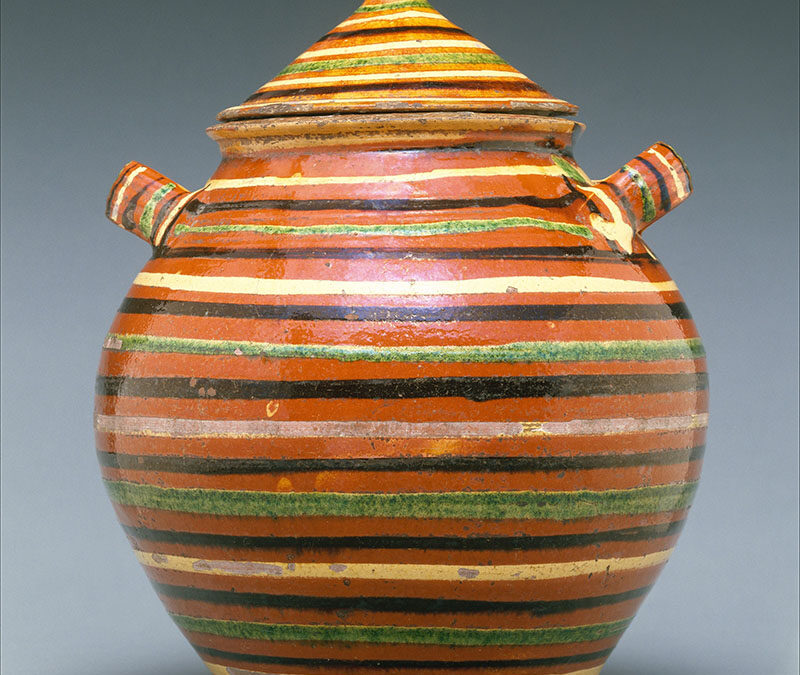
| Maker | Artist unknown |
| Date of Creation | 1790–1820 |
| Location | Alamance County, North Carolina |
| Materials | Earthenware with slip decoration |
| Institution | Metropolitan Museum of Art |
| Credit Line | Rogers Fund, 1918 |
| Accession Number | 18.95.16 |
| Photo Credit | Metropolitan Museum of Art |
This sugar pot was made in the Piedmont region of the eastern United States, an area long home to Indigenous communities and now known as Alamance County, NC. Close-knit Germanic communities settled in the area during the 18th century, many having traveled south from Pennsylvania in search of religious freedom and a fertile natural environment. The abundance of rich clay deposits supported the many potteries that developed in the region (and continues to sustain local potters today). This lidded sugar pot bears striking slip decoration of evenly spaced concentric lines encircling the vessel in a pattern of alternating colors. In form, material, and technique it relates to a small group of holloware from the region, yet the potter eschewed the traditional slip-trailed motifs more commonly found on Alamance County wares, such as wavy lines, dots and dashes, flowers, and four-pointed stars, in favor of this bold, graphic design. Like this example, most Alamance County wares are unsigned, but ongoing archaeological excavations are aiding researchers in determining attributions of potters and potteries.

